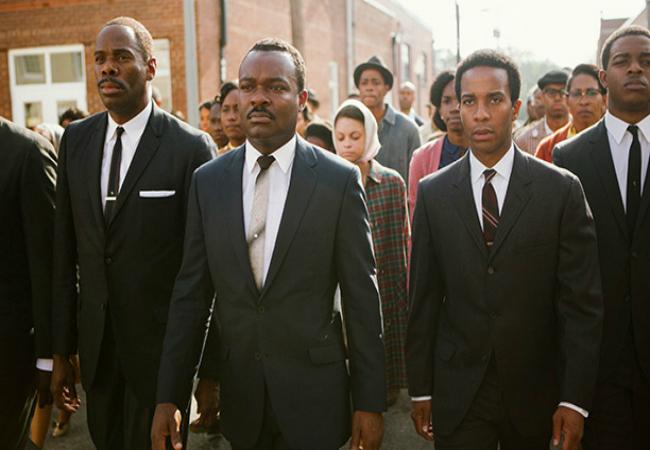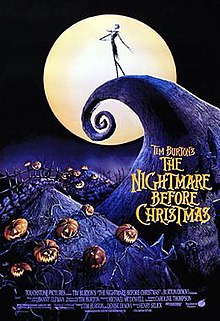Despite historical inaccuracies, ‘Selma’ still has important role to play
Selma’s role in depicting an important part of history has a profound effect on current generations
On the heels of the Golden Globes where Selma received four nominations and only took home one award – for Best Original Song (Glory by Common and John Legend) – it is still the most important movie out right now to see. In a society and a time where we must still assert that black lives matter, Selma plays an important role in reminding us about the racist history that our country has. In the wake of the deaths of Michael Brown and Eric Garner, it is more important now than ever that we remember our past in order to better the future. By introducing a new generation to the Civil Rights Movement, Selma has the ability to do this.
Selma opened nationwide on Jan. 9. The film, from director Ava Duvernay, follows the path to the Voting Rights Act of 1965 and the difficulties that were faced getting to that point. The film depicts Rev. Dr. Martin Luther King Jr.’s (David Oyelowo) relationship with President Lyndon Baines Johnson (Tom Wilkinson) and the different paths that they wished to take towards this goal. By working with James Bevel (Common) of the Southern Christian Leadership Convention (SCLC) and now-Congressman John Lewis (Stephan James) of the Student Nonviolent Coordinating Committee (SNCC), King succeeded in planning and carrying out a march from Selma, Alabama (AL) to Montgomery, AL, the capitol.
Johnson, on the other hand, wanted King to wait. He believed that in order for black voting rights to be achieved, other issues would have to be addressed first. In the film, Johnson is portrayed as having a rocky relationship with King and tiring of the pressure that King put on the issue of voting rights. However, in reality, Johnson was a strong supporter of black voting rights and had a better relationship with King than the film suggests.
Because of this, Selma has received criticism for its treatment of the white roles in the film, such as Johnson, Alabama Governor George Wallace (Tim Roth) and Sheriff of Selma, AL, Jim Clark (Stan Houston). However, this is not true. While there were white antagonists in the characters of Wallace and Clark, there were also whites who were sympathetic to the black cause depicted in the film, such as Viola Liuzzo (Tara Ochs). Liuzzo is relatively unknown in the Civil Rights Movement despite her very active role in the Selma protests.
The brunt of the film chronicles the three attempts of the protesters to cross the Edmund Pettus Bridge and begin their five day, 54-mile march from Selma to Montgomery. On the first attempt, King was not there, so the march was led by Rev. Hosea Williams (Wendell Pierce) and Lewis. At the foot of the bridge, Alabama state troopers waited alongside Clark’s police forces to stop the marchers. After asking the marchers to turn back, the troops and policemen began assaulting the men and women. This date, March 7, 1965, became known as Bloody Sunday.
In one of the most memorable scenes from Selma, King leads the protesters across the Edmund Pettus Bridge for the second time along with Williams and Lewis. This time, rather than get attacked and beaten again by Alabama state troops and Selma police, King kneels down and leads the protesters in a prayer before turning around and going back to Selma. This scene speaks measures about the impact that King had on the movement as a whole as well as the trust that was put in him.
DuVernay’s Selma seeks to emphasize the black leadership of the movement, both women and men, and this is done almost perfectly through Oyelowo’s portrayal of King. Oyelowo steals the film by capturing a side of King that is rarely seen – the side that was unsure of himself. This can clearly be seen by a conversation that he has with his wife, Coretta Scott King (Carmen Ejogo) where he feels caught up in the “fog of death”. The fear that King felt is very real, and that is something that Oyelowo expresses very well throughout the film. This, combined with his ability to match the presence that King had while giving a speech provided for a breathtaking performance.
Not only does Oyelowo perform well, but Stephan James as John Lewis also captures the audience. James expertly shows the struggle that Lewis had to go through when deciding to march. SNCC, the organization that Lewis was a part of, refused to participate in the first march on Bloody Sunday, and Lewis was left to march alone with the SCLC leaders. James and Oyelowo also work well in tandem, depicting the relationship that King and Lewis had with one another. James may have faced more difficulties than Oyelowo too, seeing as Lewis is still alive.
Overall, the film exceeded the expectations set upon it despite a few historical inaccuracies. By introducing King to box office and critical acclaim – the film has a 99 percent on Rotten Tomatoes – DuVernay has enabled Selma to take its place as one of the most important films to hit the theaters in recent memory. The film will serve as a constant reminder of the past that America has, one that it must not forget. The same reminder that is given by the bridge that the protesters marched over 50 years ago, the Edmund Pettus Bridge, named after a Grand Dragon in the Ku Klux Klan. It is for this reason, that Selma is the movie to see. Not only for its cinematic beauty, but for its historical, and present importance as well.

Jarod is a senior at Annandale High School and has been with The A-Blast for four years. Aside from being the Co-Editor in Chief, Jarod also participates...







